Entertainment
Why Is WBN Only Black and White? Exploring Marvel’s Unique Creative Choice
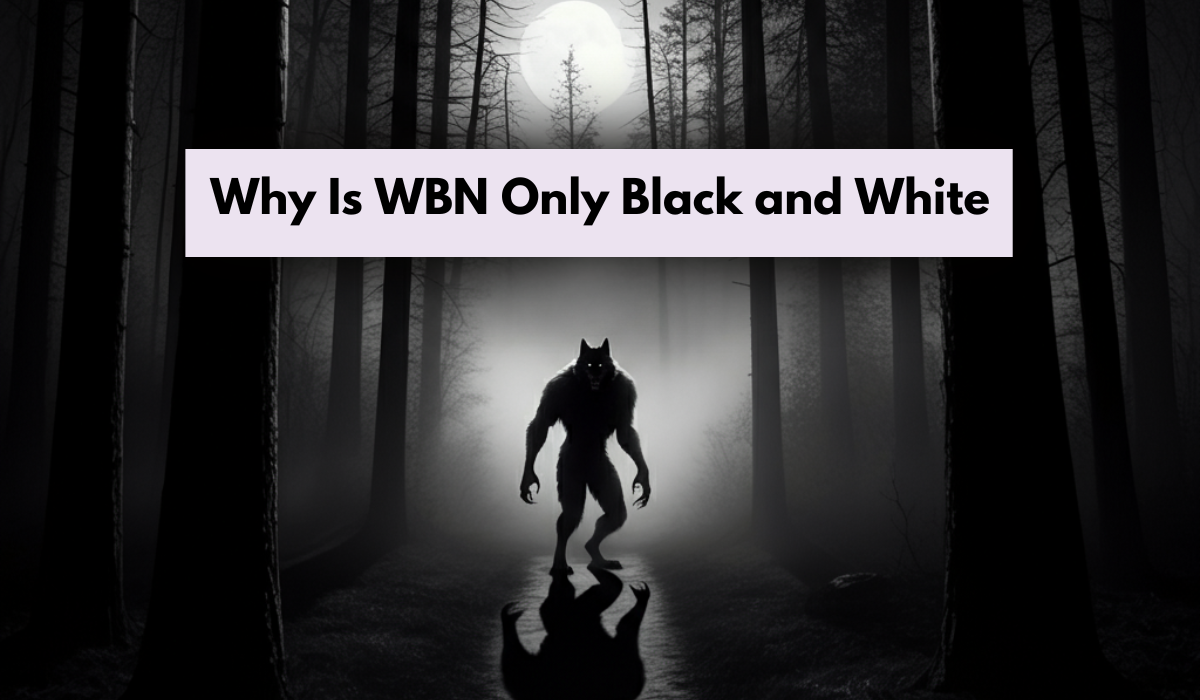
If you’ve watched Marvel Studios’ Werewolf by Night (WBN), you may have wondered why it appears entirely in black and white. The stark monochromatic aesthetic stands out in a Marvel Cinematic Universe (MCU) typically brimming with dazzling colors and visual effects. However, this creative choice was no accident it’s a deliberate stylistic decision inspired by vintage horror films and driven by a clear artistic vision.
This article unpacks the why is WBN only Black and White palette, exploring the homage to classic horror, practical benefits, and the unique tone it brings to the Marvel universe.
A Nod to Classic Horror Cinema
One of the main reasons Werewolf by Night is presented in black and white is to pay homage to the golden era of horror films. The 1930s and 1940s were dominated by iconic movies like Dracula (1931), Frankenstein (1931), and The Wolf Man (1941), produced by Universal Pictures. These films left a profound legacy with their suspenseful storytelling, atmospheric cinematography, and groundbreaking use of light and shadow all of which were amplified by the absence of color.
The creators of Werewolf by Night wanted to evoke the same eerie, mysterious ambiance that audiences associate with these vintage horror classics. Through its monochromatic format, the special not only celebrates the visual language of that era but also immerses viewers in a reminiscent world of suspense and old-school horror aesthetics.
Director Michael Giacchino described the approach as a love letter to classic monsters, saying, “We weren’t just making a Marvel project; we aimed to bring something special and unexpected.” Clearly, the choice to embrace black and white reflects a broader artistic tribute that enhances the storytelling.
Vintage Horror Meets Modern Context
By adopting the black-and-white aesthetic, Werewolf by Night seamlessly weaves together vintage horror vibes and modern content. This blend offers a nostalgic throwback while framing the story with cutting-edge visual effects and production techniques. The juxtaposition creates an immersive experience that feels both fresh and timeless.
It also allows Werewolf by Night to stand out amid the vibrant, colorful worlds we’re used to in other Marvel productions like Avengers and Guardians of the Galaxy. The decision not only serves the story but also positions the special as a unique offering within the MCU a bold experiment in tone and style.
Practical Benefits of Black and White
While creative inspiration was a guiding force, the black-and-white format also served practical purposes during the production of Werewolf by Night. One of the most prominent advantages was the way it allowed the filmmakers to work around content restrictions. For example, modern guidelines for TV and film often limit the depiction of blood and gore in vivid color. By rendering red elements (like blood) in grayscale, the production could include more intense visuals while adhering to these regulations.
This ensures that the special delivers the intensity and suspense true to the horror genre, without alienating younger viewers or breaching Marvel’s audience-friendly image.
A Visual Departure from the Marvel Formula
Since the MCU’s inception, viewers have come to associate the franchise with a signature style—vivid color palettes, polished CGI, and superheroes clad in iconic, bright costumes. Werewolf by Night takes a daring step away from this norm, using black and white not only to experiment with a retro aesthetic but also to signify a tonal shift.
The special signals Marvel’s willingness to explore uncharted territory within its sprawling universe. Its cinematic creativity marks Werewolf by Night as a stand-alone piece, giving audiences something they wouldn’t expect from a Marvel production. This bold departure resonates particularly well with fans craving diversity and unpredictability in their superhero content.
Paying Tribute to the Horror Genre’s Roots
Another compelling reason behind Werewolf by Night’s monochrome presentation lies in its tribute to the horror genre. Classic horror lives in black-and-white film stock; it’s where the genre’s roots were planted and cultivated. From the creeping shadows to the sharp contrasts of light and dark, black-and-white cinematography plays an essential role in amplifying fear, suspense, and the unknown.
The decision anchors Werewolf by Night in the deeper context of horror storytelling, creating a connection to the genre’s historical foundations while reinventing them for today’s audience.
Final Thoughts and the Legacy of WBN’s Bold Choice
Werewolf by Night isn’t just a Marvel special it’s a visual and narrative experiment that expands our understanding of what the MCU can be. By presenting the story in black and white, it pays homage to classic horror, bypasses modern content restrictions with style, and offers a refreshing break from the usual Marvel formula.
For fans and newcomers alike, the monochrome format creates a memorable experience that bridges the gap between nostalgia and modern storytelling. It also sets a precedent for more out-of-the-box creative choices in future MCU projects.
Whether you’re an avid Marvel fan or a lover of vintage cinema, Werewolf by Night is an unforgettable example of how innovative artistic decisions can break the mold and deliver something truly unique.
5 FAQs About Why WBN is Only Black and White
1. Why Is WBN Only Black and White?
WBN is in black and white to honor the visual style of classic horror films from the 1930s and 1940s. The aesthetic amplifies the suspense and atmosphere while offering a nostalgic nod to the genre’s history.
2. Does the black-and-white format affect the story?
The black-and-white presentation doesn’t change the story but enhances its tone and immersive quality. It creates a timeless, eerie ambiance that complements the horror-centric narrative.
3. Is the black-and-white style just for aesthetics?
While aesthetics play a significant role, the format also enables the filmmakers to include more intense visuals (like blood) without running afoul of strict content guidelines.
4. How does Werewolf by Night differ from other Marvel productions?
Unlike Marvel’s typically vibrant and colorful aesthetic, Werewolf by Night uses monochrome visuals to set itself apart. It adopts a darker, more experimental tone rooted in classic horror cinema.
5. Will future Marvel projects follow a similar style?
While there’s no confirmation, the success of Werewolf by Night may encourage Marvel to experiment further with bold and unconventional artistic choices.
Entertainment
Animeidhen: A Comprehensive Guide to the Rising Anime Phenomenon

Introduction
Anime has become a global cultural phenomenon, captivating millions of fans worldwide with its unique storytelling, stunning animation, and diverse genres. In recent years, platforms that allow fans to access anime content conveniently have surged in popularity. One such platform that has gained traction is Animeidhen. But what exactly is Animeidhen? Why is it becoming a go-to destination for anime enthusiasts? And how does it stand out in the competitive world of anime streaming?In this comprehensive article, we’ll explore all aspects of Animeidhen, from its background and features to its impact on the anime community. Whether you’re a seasoned anime fan or a curious newcomer, this guide will offer valuable insights into what makes Animeidhen a rising star in the anime world.
What Is Animeidhen?
Animeidhen is an online platform dedicated to providing anime content, including series, movies, and specials. While it’s still growing in popularity, it has become known for offering a user-friendly experience, a vast library of anime titles, and a community-driven approach to content sharing.
Key Features of Animeidhen:
- Extensive Library: Animeidhen hosts a wide variety of anime series and movies, covering genres such as action, romance, slice of life, fantasy, and science fiction. From classic hits to the latest seasonal releases, the platform caters to all tastes.
- Affordable and Free Options: Unlike some premium streaming services, Animeidhen offers free access to a significant portion of its library, making it accessible to a broader audience.
- Subbed and Dubbed Content: Viewers can choose between subtitles and dubbed episodes, ensuring that language preferences are catered to.
- Community Engagement: Animeidhen emphasizes user interaction, allowing fans to leave reviews, rate shows, and discuss episodes in forums or comment sections.
- Cross-Device Compatibility: The platform is designed to be compatible with various devices, including desktops, smartphones, and tablets, enabling users to watch anime anytime, anywhere.
Why Is Animeidhen Gaining Popularity?
Animeidhen’s rise can be attributed to a combination of factors. As anime continues to dominate global entertainment trends, platforms like Animeidhen fill a crucial niche by making anime more accessible and enjoyable. Here’s why Animeidhen stands out:
1. Affordability
Many premium streaming platforms like Crunchyroll or Funimation require paid subscriptions for full access, which can deter budget-conscious fans. Animeidhen’s free-tier option makes it an attractive alternative for those who want to explore anime without financial commitment.
2. Diverse Content
Animeidhen goes beyond mainstream titles, offering a mix of popular series and lesser-known gems. This diversity appeals to both casual viewers and hardcore fans searching for hidden treasures in the anime world.
3. Community-Driven Platform
Animeidhen fosters a sense of community by encouraging user participation. Fans can rate shows, share recommendations, and engage in discussions, creating a vibrant ecosystem of anime enthusiasts.
4. Ease of Access
The platform’s user-friendly interface and cross-device compatibility make it easy for users to navigate the library, search for their favorite shows, and watch on their preferred devices.
5. Appeal to Global Audiences
Animeidhen provides subtitles in multiple languages, broadening its appeal to international audiences. This inclusivity aligns with the growing global demand for anime content.
How Does Animeidhen Compare to Other Platforms?
With so many anime streaming services available, how does Animeidhen stack up against competitors like Crunchyroll, Funimation, Netflix, or Hulu? Let’s break it down:
📊 Table Comparison of Anime Streaming Platforms
| Feature | Animeidhen | Crunchyroll | Funimation | Netflix |
|---|---|---|---|---|
| Free Tier | Yes | Limited (with ads) | No | No |
| Subbed and Dubbed | Both | Primarily Subbed | Primarily Dubbed | Both |
| Library Size | Extensive | Very Large | Moderate | Moderate |
| Community Features | Yes | Limited | Limited | No |
| Original Content | No | Yes | Yes | Yes |
| Price (Premium) | Affordable | $7.99/month | $7.99/month | $9.99/month |
Key Takeaway: While Animeidhen may not have the exclusive originals or industry clout of platforms like Crunchyroll or Netflix, it carves out a niche by being accessible, community-driven, and affordable. It’s an excellent option for anime fans who value variety and a welcoming community.
The Role of Animeidhen in the Growing Anime Industry
The anime industry is growing at an unprecedented rate. According to Statista, the global anime market was valued at $28.6 billion in 2022, a number projected to reach $48.3 billion by 2030. This growth is fueled by increased accessibility through streaming platforms, the rising popularity of Japanese pop culture, and the global demand for diverse storytelling.Animeidhen contributes to this growth by:
- Expanding Accessibility: By offering free and affordable anime content, Animeidhen lowers the barrier to entry for new fans.
- Promoting Lesser-Known Shows: The platform showcases lesser-known titles that might not receive attention on larger platforms, helping to diversify the anime ecosystem.
- Building Community: The platform’s interactive features foster a sense of belonging among fans, encouraging them to dive deeper into the world of anime.
Challenges and Criticism
While Animeidhen has many strengths, it’s not without its challenges. Some of the common criticisms and potential drawbacks include:
- Copyright Issues
- Like many free streaming platforms, Animeidhen faces scrutiny over how it sources its content. Piracy concerns can tarnish the platform’s reputation and cause legal challenges.
- Limited Original Content
- Unlike Netflix or Crunchyroll, Animeidhen doesn’t produce original anime series, which might limit its appeal to fans seeking exclusive content.
- Advertisements
- Free platforms often rely on ads for revenue, which can disrupt the viewing experience. While necessary for sustainability, ads can be a drawback for some users.
- Lack of Offline Viewing
- Some competitors allow users to download episodes for offline viewing, a feature that Animeidhen currently lacks.
Actionable Tips for New Animeidhen Users
If you’re new to Animeidhen or anime streaming in general, these tips will help you get started and enhance your viewing experience:
- Explore Genres: Start with genres you enjoy. For example:
- Action: “Attack on Titan,” “Demon Slayer”
- Romance: “Your Lie in April,” “Toradora!”
- Fantasy: “Re:Zero,” “Sword Art Online”
- Comedy: “One Punch Man,” “KonoSuba”
- Engage with the Community: Participate in forums or comment sections to share your thoughts and discover new recommendations.
- Create a Watchlist: Use Animeidhen’s features to organize your watchlist and keep track of shows you want to explore.
- Check for Updates: Stay tuned for new releases, as Animeidhen frequently updates its library with the latest episodes.
Conclusion
Animeidhen is a rising star in the world of anime streaming, offering a unique blend of accessibility, community engagement, and diverse content. While it may face challenges like copyright concerns and competition from premium platforms, its affordability and user-friendly design make it an excellent choice for anime fans worldwide.As the anime industry continues to grow, platforms like Animeidhen play a crucial role in connecting fans with the stories they love. Whether you’re exploring anime for the first time or looking for a new platform to expand your horizons, Animeidhen is a destination worth checking out. Happy streaming!
Entertainment
Taylor Swift’s producer hints at new album release this year in last months

The Groundbreaking Announcement
In a moment that sent ripples through the music industry, Jack Antonoff broke his silence about Taylor Swift’s upcoming album during an exclusive Billboard Magazine interview. Speaking from Spotify’s New York headquarters on April 1, 2025, Antonoff revealed that the project would “redefine what’s possible in modern music.” The producer’s carefully chosen words suggested that Swift’s eleventh studio album would mark a dramatic departure from anything she’s done before, hinting at a late 2025 release that could revolutionize the industry.
A Legacy of Success Continues
The timing of this revelation couldn’t be more significant, coming fresh off Swift’s historic fifth Grammy win for Album of the Year with “The Midnight Garden” (2024). The album has dominated streaming charts with an unprecedented 2.3 billion streams globally, while maintaining its iron grip on the Billboard 200 for eighteen consecutive weeks. This success has set an almost impossible standard for her next project, yet industry insiders suggest she’s about to raise the bar even higher.
The Creative Process Unveiled
Recent months have seen Swift frequenting both Electric Lady Studios in New York and the legendary Abbey Road Studios in London. The most intriguing development has been the unexpected collaboration lineup spotted entering these sessions. Classical composition master Hans Zimmer and electronic music pioneer Brian Eno have been regular visitors, suggesting a bold fusion of genres that could bridge the gap between classical orchestration and modern electronic production. These sessions, often lasting into the early hours, have become the subject of intense speculation among fans and industry experts alike.
Financial Impact and Market Response
The mere hint of a new Taylor Swift album has sent shockwaves through the financial markets. Universal Music Group’s stock surged 8% following Antonoff’s interview, while Live Nation experienced a 5% boost in share value. Market analysts project the economic impact of this release to exceed $4 billion across various industries, from music and merchandise to tourism and technology. This financial response underscores Swift’s unprecedented influence on the global entertainment economy.
Renaissance World Tour: Setting New Standards
The announcement comes amid Swift’s record-shattering Renaissance World Tour, which launched in March 2025. With $1.8 billion in ticket sales across 128 shows, the tour has redefined live entertainment through its innovative use of AI-powered stage design and holographic elements. Industry experts speculate that these technological advancements might influence the production and sound of the upcoming album, suggesting a multimedia experience rather than just a musical release.
Digital Dominance and Social Media Explosion
Social media platforms have erupted with activity following the news. Swift’s recent cryptic TikTok post, featuring a chess piece and constellation map, has garnered over 50 million views. The hashtag #TS11isComing has maintained its global trending status for five consecutive days, accumulating more than 2 billion views across platforms. The Swift Archive, a fan-run database, has meticulously documented 47 studio visits in the past three months alone, fueling theories about the album’s direction.
The Future of Music Takes Shape
As streaming platforms prepare for what could be another record-breaking release, the industry stands at attention. Spotify has initiated major server upgrades, while Apple Music has reserved premium promotional spots for the fourth quarter of 2025. Amazon Music’s rumored exclusive documentary about the album’s creation process suggests this release will be more than just music – it will be a cultural moment that defines 2025.
A New Chapter Begins
With her masters rerecording project completed in early 2025, Swift now enjoys complete creative freedom to explore uncharted musical territories. Music historian Dr. Sarah Chen suggests this could be Swift’s most daring work yet, uninhibited by industry expectations or past obligations. The combination of classical expertise from Zimmer, electronic innovation from Eno, and Swift’s pop mastery promises something unprecedented in musical history.
Global Impact and Cultural Significance
The anticipation for this release extends far beyond music. Fashion brands are already preparing potential merchandise collections, while major corporations compete for partnership opportunities. The album’s expected November 2025 release date strategically positions it to dominate year-end discussions and holiday sales, with projections suggesting it could become the most commercially successful album of the decade.
Looking to the Future
As the music world eagerly awaits official confirmation, one thing remains clear: Taylor Swift continues to push the boundaries of what’s possible in the music industry. Whether through her groundbreaking tours, record-breaking streams, or innovative musical directions, she remains at the forefront of popular culture’s evolution. As Antonoff cryptically noted in his recent interview, “Sometimes the biggest revolutions in music come from the most unexpected places. All I can say is: get ready.”This comprehensive report will be updated as new information emerges. For the latest developments, stay tuned to our coverage of this groundbreaking musical project.
Frequently Asked Questions: Taylor Swift’s 2025 Album Revelation
Release Date & Timeline
Q: When exactly will the new album be released? A: Industry sources strongly indicate a November 2025 release. While the exact date hasn’t been confirmed, Swift historically favors fall releases for maximum holiday season impact.
Q: Has Taylor officially announced the album? A: Not yet. The information comes from producer Jack Antonoff’s Billboard interview and multiple verified industry sources.
Q: How long has this project been in development? A: Studio sessions began in early 2025, with documented recordings at Electric Lady Studios (NYC) and Abbey Road Studios (London) over the past three months.
Musical Style & Content
Q: What genre will the new album be? A: The album is expected to blend classical orchestration, electronic elements, and pop music, featuring collaborations with Hans Zimmer and Brian Eno alongside traditional pop production.
Q: Will this be different from her previous albums? A: Yes. Antonoff describes it as “completely revolutionary” and unlike anything in Swift’s catalog, suggesting a significant departure from her previous work.
Q: Who are the confirmed collaborators? A: Currently confirmed collaborators include:
- Jack Antonoff (Lead Producer)
- Hans Zimmer (Classical Composer)
- Brian Eno (Electronic Music Pioneer) Additional collaborators are expected to be announced.
Tour & Performances
Q: Will there be a tour for the new album? A: While not officially confirmed, industry experts expect a tour announcement following the album release. The current Renaissance World Tour concludes in September 2025.
Q: Are there any preview performances planned? A: No preview performances have been announced yet, though industry insiders suggest possible holiday season television appearances.
Commercial & Streaming
Q: Will the album be available on all streaming platforms? A: Yes, major platforms including Spotify, Apple Music, and Amazon Music are preparing for the release with enhanced server capacity.
Q: Will there be physical copies available? A: While not confirmed, Swift traditionally releases multiple physical formats including vinyl, CD, and special editions.
Q: What do the recent social media hints mean? A: Swift’s recent chess piece and constellation map posts are believed to be Easter eggs relating to the album’s theme, though their exact meaning remains unconfirmed.
Industry Impact
Q: How is this affecting the music industry? A: The announcement has already impacted:
- Stock prices of major music companies
- Streaming platform preparations
- Concert industry planning
- Global music marketing strategies
Technical Details
Q: What recording technology is being used? A: The album reportedly utilizes cutting-edge recording techniques, including:
- Advanced orchestral recording methods
- Electronic music production tools
- AI-enhanced sound processing
- State-of-the-art mixing technology
Historical Context
Q: How does this fit into Swift’s career timeline? A: This will be Swift’s first completely original album since completing her rerecording project in early 2025, representing a new era in her artistic evolution.
Additional Information
Q: Where can I find more details about the album? A: Keep following our coverage for regular updates, and monitor these trusted sources:
- Billboard Magazine
- Rolling Stone
- Pitchfork
- Official Taylor Swift news channels
Entertainment
WWE Reportedly Changed Matches After Smackdown in Orlando.
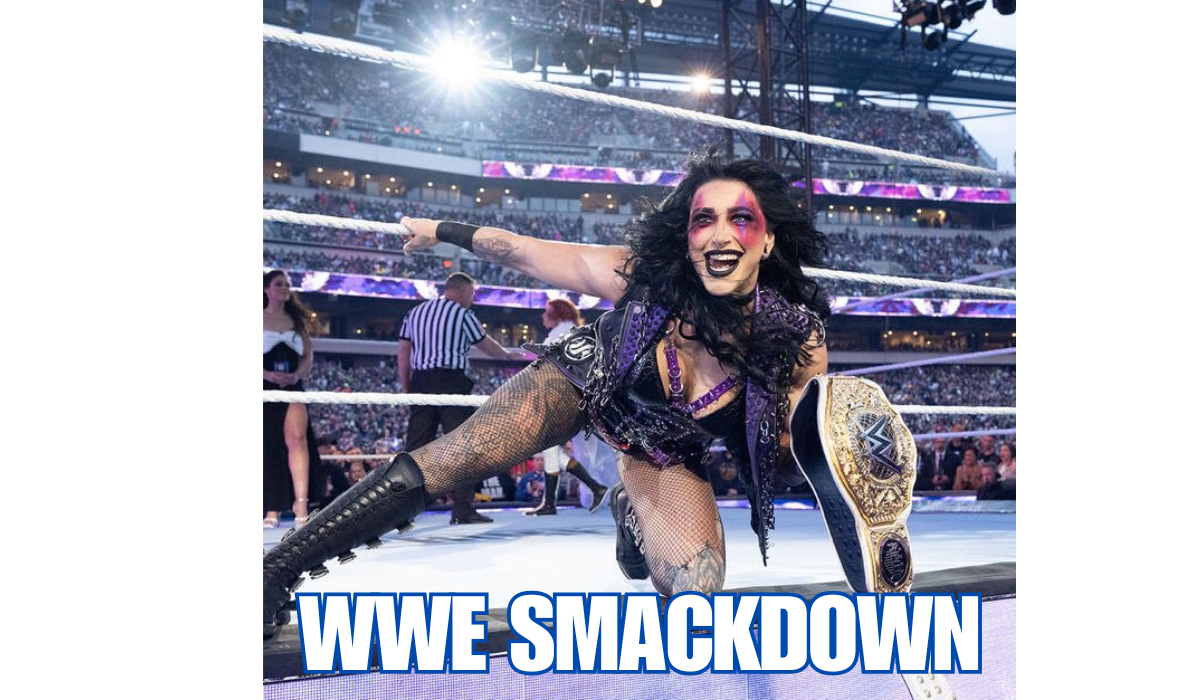
The world of professional wrestling is synonymous with drama, excitement, and unpredictability. Fans witnessed these qualities firsthand in Orlando, where WWE reportedly made significant changes to matches post their SmackDown event.
Why does WWE make such changes, and how do they impact ongoing storylines and fan engagement? This blog explores the possible reasons behind this decision, the ripple effect on WWE programming, and what fans can expect in the future. Let’s explore WWE Reportedly Changed Matches After Smackdown in Orlando.
Why WWE Reportedly Changed Matches After SmackDown in Orlando
It’s not unusual for WWE to make last-minute adjustments, but when reports surfaced about significant match changes following SmackDown in Orlando, fans and insiders alike started speculating about the reasons.
Here’s a closer look at some factors that could have influenced WWE’s decision-making:
1. Audience Reactions
WWE has always emphasized engaging its fan base. Audience reactions often play a crucial role in shaping storylines. The company may have noticed lackluster responses to certain matches or characters during SmackDown and adjusted future matchups accordingly to maintain momentum.
2. Backstage Issues
Backstage tensions, scheduling conflicts, or even injuries among the superstars could be reasons behind the unexpected changes. WWE’s ability to adapt swiftly to these challenges ensures that the show goes on without sacrificing quality.
3. Creative Adjustments
WWE is known for its intricate storylines. Sometimes, unforeseen circumstances necessitate creative shifts. By altering matches, the creative team may aim to accelerate or redirect ongoing feuds and rivalries to keep viewers engaged.
4. Logistical Challenges
Behind-the-scenes logistical issues, such as availability of certain superstars or unforeseen complications during live tapings, may also contribute to match changes. WWE has built a reputation for overcoming such challenges seamlessly.
5. The Element of Surprise
Finally, WWE thrives on unpredictability. Surprise entrants, match stipulations, or reshuffled lineups can create buzz and keep fans guessing, ensuring continued engagement with their flagship programming.
Impacts of Changing Matches After SmackDown in Orlando
Changing matches at the last minute might seem disruptive, but for WWE, it’s all part of the game. Here’s how it can impact both the storylines and the viewing experience for fans:
On Storylines:
- Plot Redirection: Changes to high-profile matches often result in a shift in the direction of a rivalry or feud. For instance, an injury may require one star to step aside, introducing new dynamics.
- Setting Up Future Events: Adjustments can be used to build anticipation for upcoming pay-per-views, teasing fans with new story arcs or unexpected partnerships.
- Accelerating Storylines: Sometimes, WWE uses match alterations to fast-track a storyline, bringing exciting twists sooner than anticipated.
On Fans:
- Keeping Fans Hooked: Unexpected changes keep die-hard fans engaged, as they tune in to anticipate the unexpected.
- Fan Satisfaction and Frustration: Though many appreciate the excitement of change, some fans may feel disappointed when anticipated matchups no longer materialize. This balance is central to maintaining fan engagement.
How WWE’s Flexibility Keeps Fans Engaged
WWE’s ability to adapt to internal and external factors speaks to its legacy as one of the most successful entertainment franchises. By maintaining flexibility in programming, WWE achieves several key goals:
- Staying Relevant: Storylines evolve alongside audience expectations, keeping WWE programming connected to its fan community.
- Continuous Innovation: Whether it’s through match twists, surprise appearances, or new character arcs, WWE constantly reinvents itself.
- Maintaining Momentum: Abrupt changes ensure that even unforeseen challenges don’t disrupt WWE’s weekly episodic storytelling or long-term plans.
What Fans Can Expect Next
Reports of changes after SmackDown in Orlando create buzz among fans eagerly awaiting what WWE has planned next. With weeks of tapings and live events ahead, it’s a safe bet that more surprises are on the horizon.
Key Predictions for Upcoming WWE Programming
- More Surprises: Expect unexpected twists—anything from surprise returns to game-changing betrayals!
- Build-Up for Pay-Per-Views: Altered matches may foreshadow significant developments as key pay-per-view events approach.
- Fan-Informed Adjustments: WWE’s creative team continues to listen to fan responses, tailoring storylines for maximum impact.
The Road Ahead
WWE’s ability to adapt, improvise, and innovate is what sets it apart. Fans curious about the rationale behind match changes after SmackDown in Orlando can rest assured that such moves are driven by WWE’s commitment to delivering high-quality, engaging entertainment week after week.
Whether it’s through blockbuster matches, shocking betrayals, or surprise inclusions, WWE continues to evolve, ensuring its loyal fan base will remain captivated.
FAQs About WWE Reportedly Changed Matches After Smackdown in Orlando.
Why did WWE Reportedly Changed Matches After Smackdown in Orlando.?
WWE reportedly made changes due to a mix of injuries, creative shifts, logistical challenges, and fan reactions. These adjustments ensure the company stays agile and aligned with audience expectations.
Were major storylines affected by these changes?
Yes, the changes reportedly included significant shifts to the trajectory of ongoing rivalries and feuds. Fans can expect these changes to influence long-term storytelling.
How does WWE handle last-minute match changes?
WWE uses flexibility and creative expertise to adjust match cards dynamically. By introducing new elements, altering storytelling, or rescheduling matches, WWE keeps its programming engaging.
Are last-minute changes common in WWE?
Absolutely. Last-minute changes are not uncommon and are often prompted by injuries, logistical hurdles, or strategic moves to enhance the audience’s experience.
How do fans typically respond to these changes?
Fan responses vary. While many enjoy the unpredictability, others may feel disappointed when specific matchups are altered. The key to WWE’s success lies in balancing these perspectives.
-
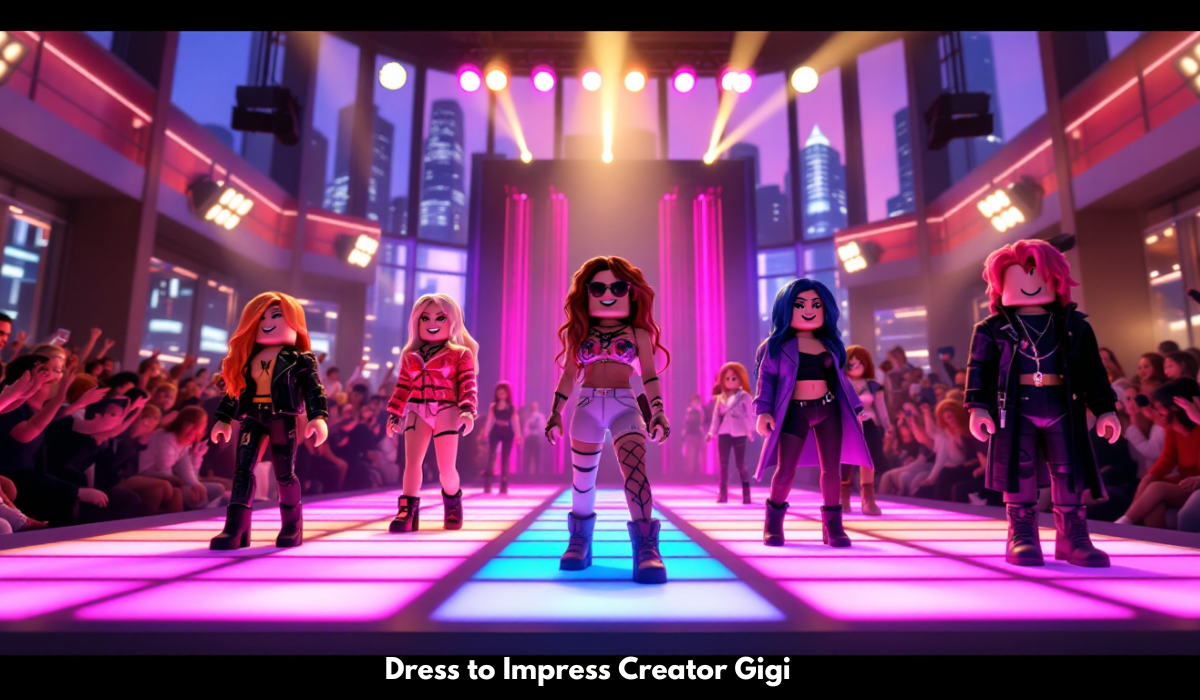
 Fashion1 month ago
Fashion1 month agoDress to Impress Creator Gigi and the Rise of Roblox Fashion
-

 Finance3 months ago
Finance3 months agoUnderstanding Luck Hunter Predition Hoy Mananan in the Crypto Market
-
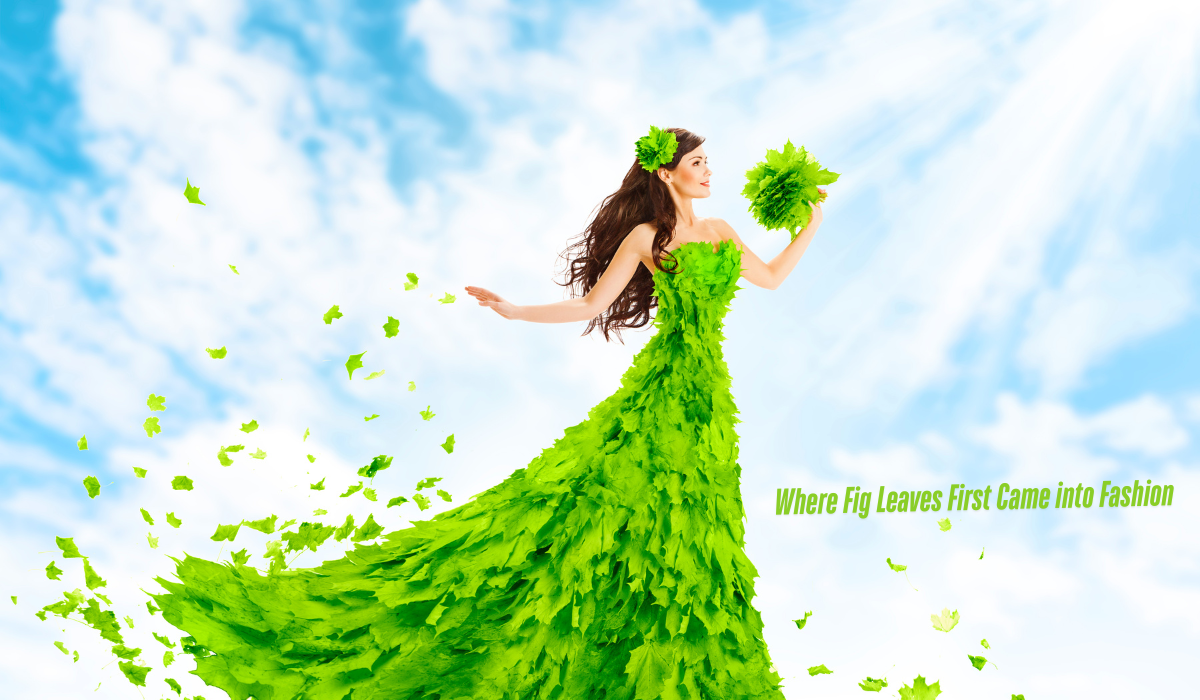
 Fashion3 months ago
Fashion3 months agoWhere Fig Leaves First Came into Fashion
-

 Blog4 months ago
Blog4 months agoBrock Purdy House And Humble Lifestyle
-
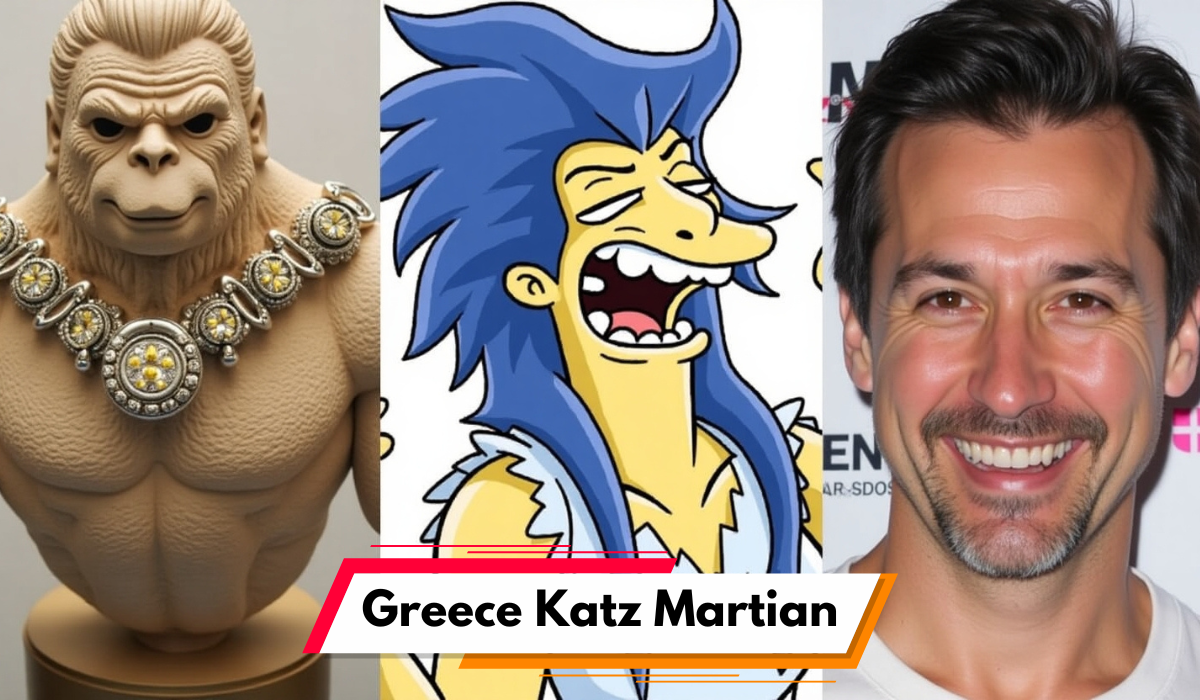
 Art & Culture4 months ago
Art & Culture4 months agoKatz Martian, Marvin & Greece Katz: Creative Icons
-
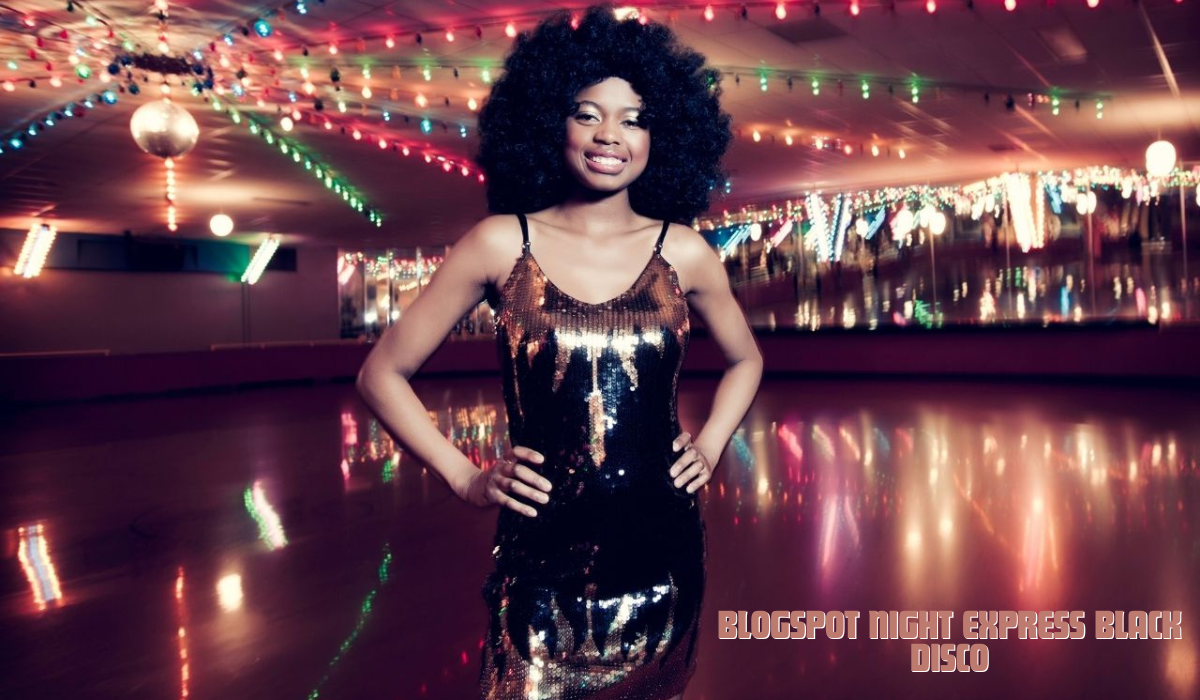
 Entertainment4 months ago
Entertainment4 months agoDiscover Blogspot Night Express Black Disco
-

 Blog3 months ago
Blog3 months agoKennedy Funding Ripoff Report – Separating Facts from Misconceptions
-

 Blog4 months ago
Blog4 months agoExploring the Alexander Calder Tubes ea For Sale Alexander Calder Tubes






